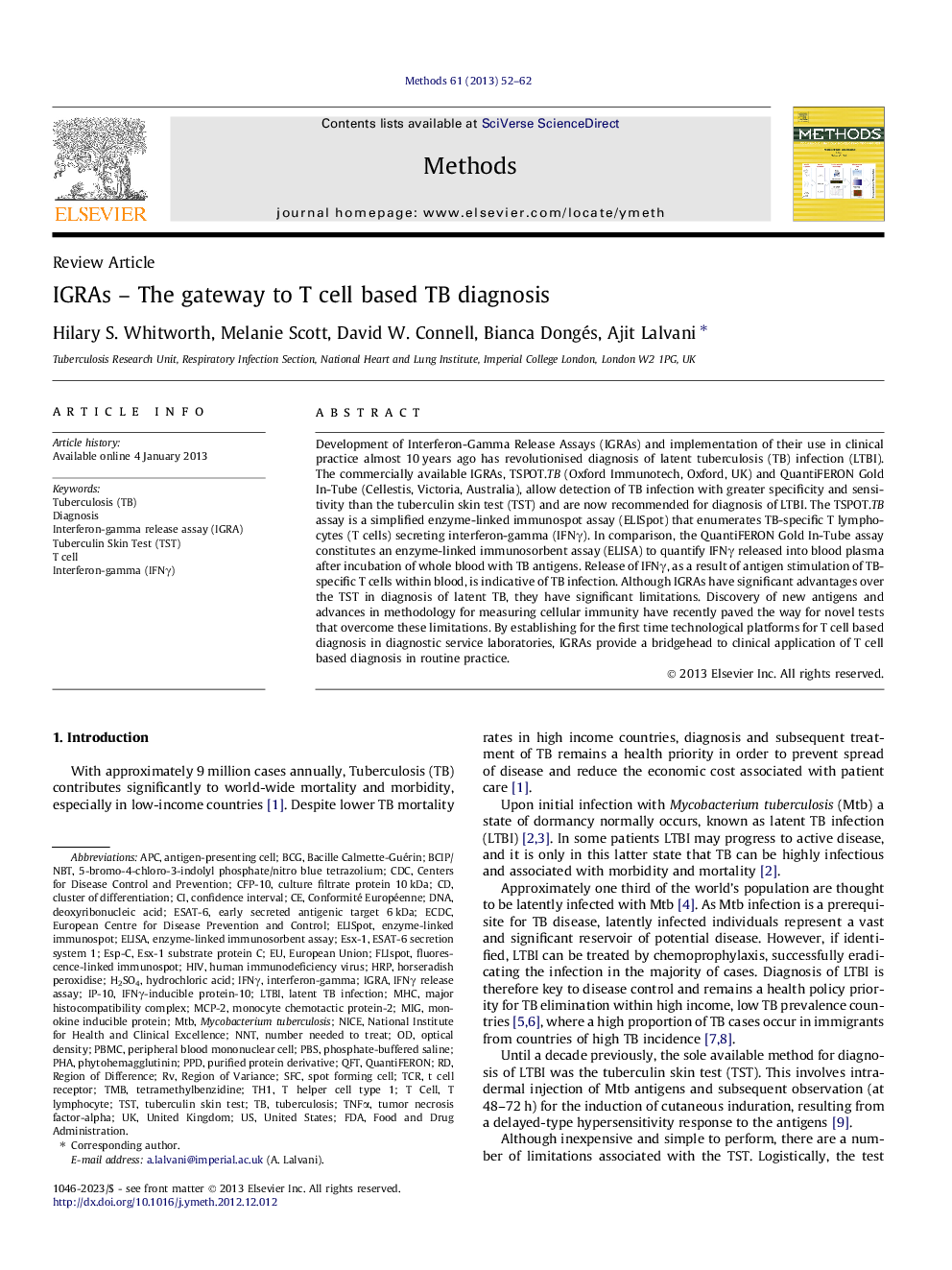| Article ID | Journal | Published Year | Pages | File Type |
|---|---|---|---|---|
| 1993379 | Methods | 2013 | 11 Pages |
Development of Interferon-Gamma Release Assays (IGRAs) and implementation of their use in clinical practice almost 10 years ago has revolutionised diagnosis of latent tuberculosis (TB) infection (LTBI). The commercially available IGRAs, TSPOT.TB (Oxford Immunotech, Oxford, UK) and QuantiFERON Gold In-Tube (Cellestis, Victoria, Australia), allow detection of TB infection with greater specificity and sensitivity than the tuberculin skin test (TST) and are now recommended for diagnosis of LTBI. The TSPOT.TB assay is a simplified enzyme-linked immunospot assay (ELISpot) that enumerates TB-specific T lymphocytes (T cells) secreting interferon-gamma (IFNγ). In comparison, the QuantiFERON Gold In-Tube assay constitutes an enzyme-linked immunosorbent assay (ELISA) to quantify IFNγ released into blood plasma after incubation of whole blood with TB antigens. Release of IFNγ, as a result of antigen stimulation of TB-specific T cells within blood, is indicative of TB infection. Although IGRAs have significant advantages over the TST in diagnosis of latent TB, they have significant limitations. Discovery of new antigens and advances in methodology for measuring cellular immunity have recently paved the way for novel tests that overcome these limitations. By establishing for the first time technological platforms for T cell based diagnosis in diagnostic service laboratories, IGRAs provide a bridgehead to clinical application of T cell based diagnosis in routine practice.
